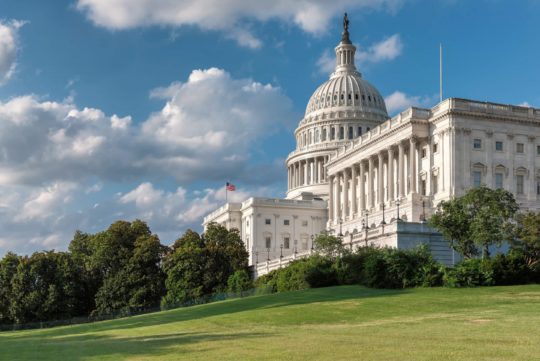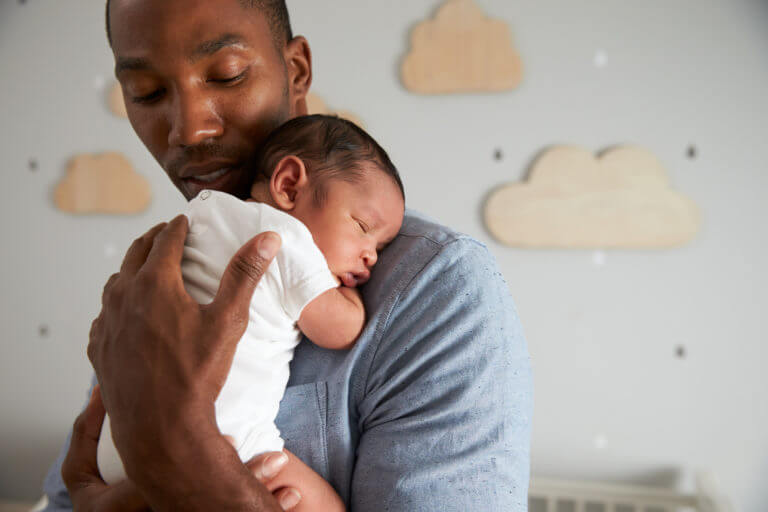Child Physical Abuse Prevention
What Is Child Physical Abuse?
Child physical abuse is an act, failure to act, or a circumstance that leads to harm or significant risk that a child will be harmed.
This includes the non-accidental physical injury to a child (i.e. striking, kicking, burning, biting, or any action that results in the physical impairment) by a person responsible for the child’s welfare. Physical abuse can be identified by physical indicators such as welts, human bite marks, bald spots, burns, skeletal and head injuries, lacerations, abrasions, discoloration of skin, and unexplained bruise marks in various stages of healing. States vary in their legal definitions of physical abuse, how they define perpetrators of abuse, and in how they determine exemptions from such definitions. Religion, cultural practices, and physical punishment are among the most prevalent exemptions.
There is no single cause of physical abuse. Instead, there are usually multiple and interacting contributors at child, perpetrator’s (e.g. parent/caregiver), and family levels. Examples of contributing risk factors include the age of the child (i.e., children under one are more likely to experience physical abuse), a perpetrator’s struggling with substance abuse, a perpetrator’s poor emotional control, and a family’s economic stress (e.g. low socioeconomic status).
Key Facts
11%
or about 73,000, of all substantiated cases of child maltreatment in 2018 were officially counted as victims of child physical abuse.
Source: U.S. Department of Health and Human Services
46%
of child fatalities were a result of a child physical abuse in 2018.
Source: U.S. Department of Health and Human Services
18%
of adolescents between 14 and 17 years old reported parent/caregiver physical abuse at some point in time.
This figure was taken from a national representative sample from the 2011 National Survey of Children’s Exposure to Violence II (NatSCEV II).
Source: JAMA Pediatrics
What Is Abusive Head Trauma?
One severe form of physical abuse is Abusive Head Trauma (AHT), or injury to a child’s brain due to violent shaking and/or inflicted blunt impact.
Shaken baby syndrome is an example of AHT. AHT occurs when an adult violently shakes a child, causing internal bleeding, serious brain injuries, other disabilities, or death. For children under the age of 5, AHT is the leading cause of child physical abuse fatalities in the U.S. and children one years old or younger are at the greatest risk of AHT.
Nearly 1/3
of all child maltreatment deaths are a result of Abusive Head Trauma.
Source: CDC
What Is Corporal Punishment?
Corporal punishment is the use of physical force against a child with the intention of causing him/her to experience pain so as to correct his/her misbehavior.
Corporal punishment is often referred to as spanking, hitting, slapping, or paddling of a child by a parent/caregiver or a school official. Research suggests that there are significant negative effects associated with corporal punishment, including aggression, poor parent-child relationship, and delinquency.
Other research suggests that there continues to be a decline in the use of spanking. These findings that work addressing the perception and frequency of corporal punishment is important.
As of 2016, the use of corporal punishment in public schools is legal in 19 states.
63%
of parents in a recent survey responded that they sometimes spanked their children, yet, only about half of these parents believe that they should spank a child.
Source: Child and Adolescent Social Work Journal (2019)
4,000+
schools still utilized physical discipline in the classroom.
Source: Education Week
109,000
children had been physically punished during the 2013-2014 school year.
Source: Education Week
Prevention
As a society, we have a collective responsibility to prevent children from experiencing physical abuse, including AHT and corporal punishment. To accomplish this, we must support services that promote children’s development, health, and safety; invest in research, training, and public education to strengthen protective factors that buffer the risk factors for neglect; and advocate for policies and programs to help meet the basic needs of children and families.
The CDC lists a number of strategies that aid in reducing or preventing child abuse and neglect. These include strengthening economic support to families, changing social norms to support parents and positive parenting, providing quality care and education early in life, enhancing parenting skills to promote healthy child development, and intervening to lessen immediate and long-term harms.
How We’re Addressing Child Physical Abuse
Prevent Child Abuse America’s research, programs, and affiliate network is focused on preventing child physical abuse through several practical solutions for creating the conditions for safe, stable, and nurturing relationships and environments for all children, families, and communities.

We work to strengthen economic supports through public policy work at the federal and state levels.

Our signature home visiting program, Healthy Families America, helps to ensure children have a strong start.

We promote social norms that protect against sexual violence and support positive parenting through public awarenes and engagment campaigns.
Outcomes
Impact
Child Physical Abuse
Child physical abuse is a form of trauma that impacts a child’s physical (e.g., broken bones, chronic pain or medical conditions, head injuries), psychological (e.g. anxiety, depression, aggression, suicidal thoughts), cognitive (e.g. learning impairments), and social/behavioral (e.g. conduct disorder, poor attachment) development.
Abusive Head Trauma
Children who are victims of AHT suffer significant, long-term health consequences, including vision problems, developmental delays, physical disabilities and/or hearing loss.
Corporal Punishment
There are long-term negative heath and behavioral outcomes for children who are physically disciplined and, conversely, research has shown that corporal punishment does not change a child’s actual behavior. Negative outcomes associated with corporal punishment include aggression, anti-social behavior, negative parent-child relationships, and low self-esteem, among other.
It is important to note that corporal punishment in schools disproportionately affects students of color and students with disabilities—perpetuating inequity in the U.S.
Cost
Given the prevalence and extensive consequences of child abuse and neglect on children and families, there are also enormous societal costs involved. A 2018 report estimated the lifetime economic burden of substantiated child abuse and neglect cases and child fatalities is approximately $592 billion nationwide. The U.S. spends large sums of money funding the child welfare system and allocates very few resources or time to the primary prevention of child abuse and neglect. For example, in 2016 the U.S. spent about $30 billion on child welfare services , whereas in FY2020, Congress only allocated $56 million to Community-Based Child Abuse Prevention (CBCAP) services—the largest dedicated federal source for primary prevention funding for child abuse and neglect.
Latest Child Physical Abuse Resources
See more-

Physical Punishment: Attitudes, Behaviors, and Norms Associated with Its Use Across the US
This report showcases findings from a survey of over 3,000 US adults to better understand attitudes, beliefs, behaviors, and perceptions associated with physical punishment.
Stats & Factsheets
-

Corporal Punishment One-pager
Substantial evidence shows negative long-term outcomes for children who are disciplined through corporal punishment. In fact, findings indicate that children who are physically punished (i.e., spanked) have similarly negative outcomes to children that are physically abused. This helpful one-page identifies a number of strategies to promote positive parenting and discipline strategies that do not include hitting or the physical use of force with children.
Toolkits & Guides
-

New Research Into Abusive Head Trauma
Review recent research, including studies showing contradictory results, and examine some of the reasons behind these differences as well as what prevention professionals can do in the future to combat abusive head trauma.
Research Reviews
Frequently Asked Questions About Child Physical Abuse
In 2018, approximately 73,000 children (about 11% percent of all substantiated cases of child maltreatment) were officially counted as victims of child physical abuse. In 2018, child physical abuse alone was responsible for approximately 46% of child fatalities.
The 2011 National Survey of Children’s Exposure to Violence II (NatSCEV II), a national representative sample, found that about 18% of adolescents between 14 and 17 years old reported parent/caregiver physical abuse at some point in time.
Notably, physical abuse is likely to increase during times of crisis, such as during economic downturns or a global pandemic, due factors such as increased stress and financial uncertainty.
Nearly one-third of all child maltreatment deaths are a result of Abusive Head Trauma.
As of 2016, the use of corporal punishment in public schools is legal in 19 states. An Education Week investigation found that more than 4,000 schools still utilize physical discipline in the classroom and that during the 2013-2014 school year nearly 109,000 children had been physically punished.
Child physical abuse is a form of trauma that impacts a child’s physical (e.g., broken bones, chronic pain or medical conditions, head injuries), psychological (e.g. anxiety, depression, aggression, suicidal thoughts), cognitive (e.g. learning impairments), and social/behavioral (e.g. conduct disorder, poor attachment) development.
Children who are victims of Abusive Head Trauma suffer significant, long-term health consequences, including vision problems, developmental delays, physical disabilities and/or hearing loss.
There are long-term negative heath and behavioral outcomes for children who are physically disciplined and, conversely, research has shown that corporal punishment does not change a child’s actual behavior. Negative outcomes associated with corporal punishment include aggression, anti-social behavior, negative parent-child relationships, and low self-esteem, among other. It is important to note that corporal punishment in schools disproportionately affects students of color and students with disabilities– perpetuating inequity in the U.S.



